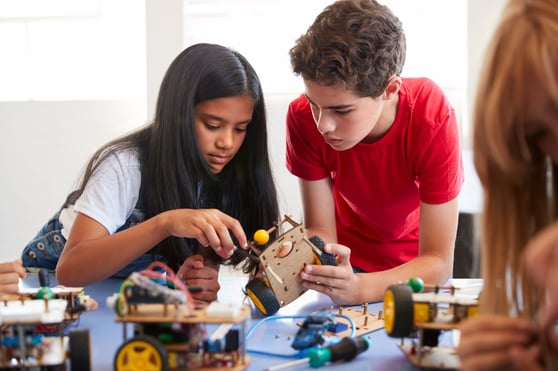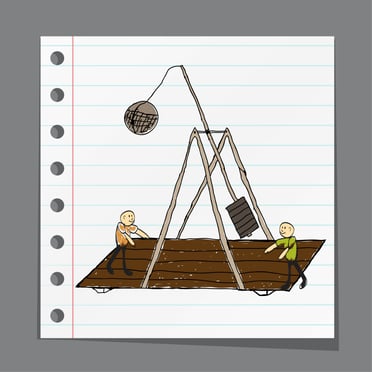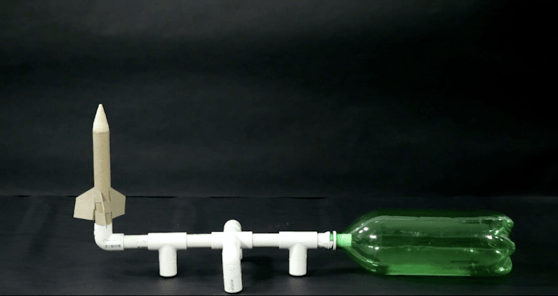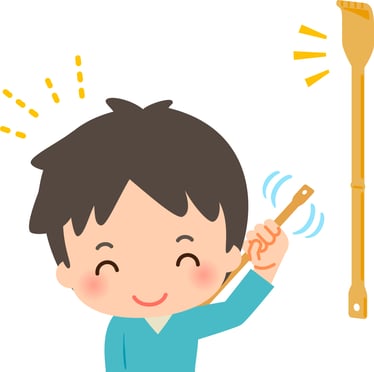
5 Easy Math Engagement Strategies for the Classroom
The news headlines are daunting. Math scores are down. School districts are scrambling to turn things around. And...
ALI Staff | Published May 22, 2023
Children are natural engineers who are curious, inventive, and ready to create things out of the most unexpected materials!
So how do we foster this natural predilection and build skills and confidence in engineering as we teach them science?
The answer is to offer them engineering projects explicitly designed for kids.

Traditionally, the education system hasn’t presented students with engineering until they are well into secondary school or even college.
So what do we mean when discussing teaching engineering to elementary or middle school children?
How can kids understand engineering before they know fundamental academic subjects like algebra and physics?
We don’t start teaching young children to read by handing them a copy of Hamlet.
Similarly, we don’t teach kids engineering by asking them to design the Hoover Dam. Instead, we present them with age-appropriate hands-on projects where they can see and experience first-hand how scientific principles work in a tangible, practical application.
Teaching engineering to kids typically includes exploring an engineering challenge and the science underlying its solution.
But the key to teaching engineering to kids—even very young children—is to teach them to think like an engineer, applying the same design principles that working engineers use every day. In the process, kids see how to apply their creativity to solve problems.
As a bonus, they can also envision themselves working as engineers—a rewarding, well-paying career path that is in demand and appears in multiple settings and applications.
Traditionally a career dominated by white males, the profession is undergoing a revolution as more women and minorities pursue engineering degrees and enter the field.
Teaching children how to think like engineers and envision themselves as engineers will go a long way to filling the pipeline with students who are well-prepared for college and careers.
Within a school curriculum, engineering activities for kids also extend their STEM learning, complementing core science and math curricula and offering them a fun and engaging way to connect with the material.
As with all project-based learning, project engineering allows students to explore science by applying inquiry and critical thinking skills to a real-life problem or phenomenon.
By presenting students with a problem that feels relevant to their lives and the world around them, PBL sparks curiosity and applies it to observable, day-to-day life.
They learn science and math concepts as needed, using them to understand and solve a problem or complete a project.
This approach is especially important to engineering since this is how engineers work in the real world: when presented with a problem, they follow a creative engineering design process to try to solve it.
And, as in real-life engineering, project engineering involves analysis, iteration, and enhancements. Students learn that there is often not a single “right answer”—there are solutions, and better solutions.
Many engineering curricula use a lesson model like the DIVE-in model (Deconstruct, Imitate, Vary, and Explore).
In this approach, students are first presented with a grade-appropriate engineering challenge and a working prototype of a solution.
They figure out how the prototype works by taking it apart and putting it back together again, and then improve on the design.
The steps in the DIVE model are:
Deconstruct - Students take apart the prototype, record data about it, including measurements, and create diagrams to understand how and why it works.
Imitate - They then apply reverse engineering to the prototype, building their own version of the deconstructed object based on what they have learned from the original.
Vary - Students then analyze their reverse-engineered object and consider different ways to improve it, for example, making it faster, stronger, lighter, higher-flying, or more versatile through the use of different materials, changes in construction, or other enhancements.
Explore - Students are asked to apply what they learned through this specific project to a real-life scenario.
There’s a wealth of engineering project ideas for kids out there.
Just a few examples include building a suspension bridge, a roller coaster, a Rube Goldberg-type machine, a marble run, a balloon-powered car, a bubble-making machine, a catapult, a flying bird, a fan, a windmill, or paper building blocks.
For older children, some projects include designing and coding a sensor to measure soil moisture and temperature in a garden or an electronic weather station; creating robots or drones; creating electromagnetic trains; and working with circuit boards to create a variety of projects.
Here are three engineering project ideas for kids to spark your imagination:

The tried-and-trued Trebuchet— a staple in engineering education.
A trebuchet was a medieval catapult weapon used during sieges to fling rocks and other objects at castle walls.
Trebuchets differ from other catapult devices because they store potential energy and rapidly convert it to kinetic energy; a trebuchet relies on gravitational potential energy by raising a heavy counterweight off the ground and releasing it.
In this project, students build a small tabletop trebuchet that launches an eraser as far as several feet.
The design is basic, giving students the opportunity to experiment with alternative materials and design features once they have successfully built the prototype.
The project uses common classroom materials such as cardboard, popsicle sticks or pencils, a milkshake-sized straw, and an AA battery as the counterweight.
Students learn about kinetic and potential energy in this project. They might be asked to observe and record the height and distance of their projectile and the impact of using a heavier or lighter projectile or a heavier or lighter counterweight.
They might also experiment with different ways to build the trebuchet supports to improve stability or tolerance of a heavier counterweight or vary the length of the pivot arm.

Kids love stomp rockets. Who doesn’t like stomping on a plastic bottle to launch a rocket high in the air? With a stomp rocket, the compressed air inside the bottle is forced into a closed paper or cardboard rocket, which responds by flying 50 to 100 feet into the air.
This project takes some preparation of the prototype and materials by the teacher, although the students can participate, depending on their age.
The project requires cutting and assembling PVC pipe to build the launcher, assembling the rocket from paper or cardboard, and finally attaching the 2-liter bottle to supply the force to launch.
Stomp rockets provide an opportunity to talk about rockets and the science behind their launching and teach about compressed air and forces.
There is also an opportunity to improve rocket performance by adding features that diminish drag on the rocket, such as fins or a nose cone.
This project can be deconstructed and reverse-engineered indoors but must be tested outdoors with plenty of surrounding space. But it’s memorable and sure to please students!

This is a simple project with many solutions, giving children the scope for creativity in their use of materials and providing a good platform for discussing the design process.
It also provides a new perspective on engineering: plenty of design thought can go into even a simple, everyday object with no moving parts.
The teacher might start by asking the students to think about the problem before they immediately begin building, asking questions like “What properties make a good back scratcher?”, “What are the parts of a back scratcher (handle, shaft, scratching mechanism)?” and “What kinds of materials might work best for each of those components?”
Then students might be asked to sketch one or more designs and choose materials for each component part before constructing their scratchers.
Once they’ve built one prototype, students assess their backscratcher’s success and alter their designs accordingly, just as real engineers do.
The project can use basic classroom materials like popsicle sticks, glue, straws, and cardboard but could also draw on less conventional materials like screws, cotton balls, and plastic forks.
Introducing students to engineering projects, especially at an early age, prepares them to think and problem-solve like real engineers.
This exposure to STEM can have ripple effects, including possible future careers, but, at the very least, it provides students with new skill sets.
Working together on engineering projects not only helps students develop skills they'll need, but it's also fun for them!

The news headlines are daunting. Math scores are down. School districts are scrambling to turn things around. And...

Math assessment in California is changing. What used to be a compliance exercise or reporting tool is now becoming a...

You know the moment: a student’s eyes light up when the science experiment fizzes or the math puzzle helps them...